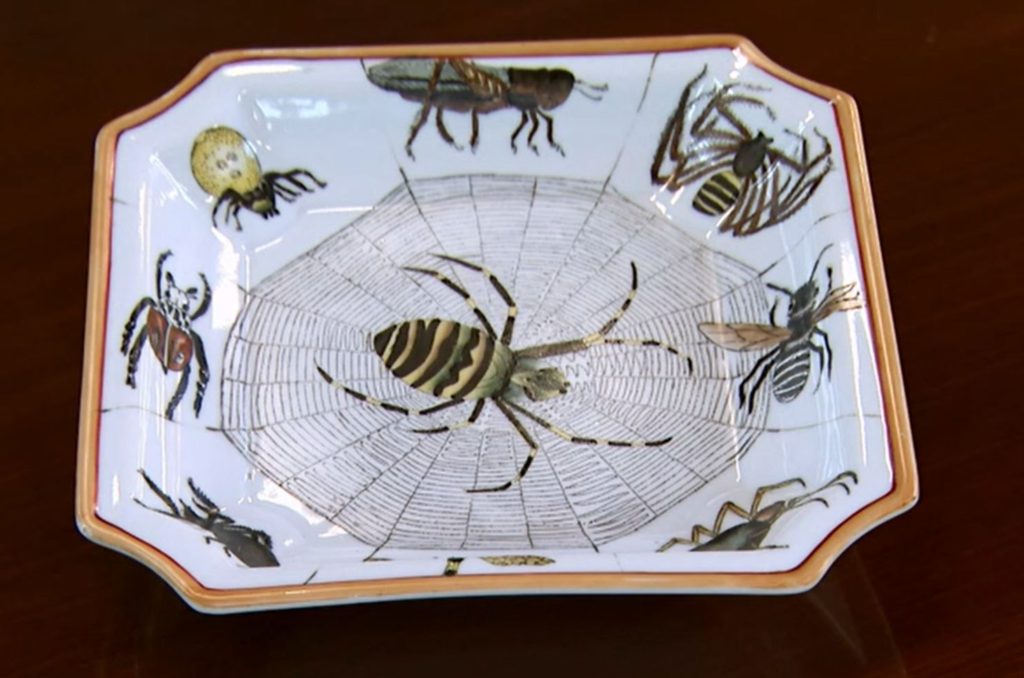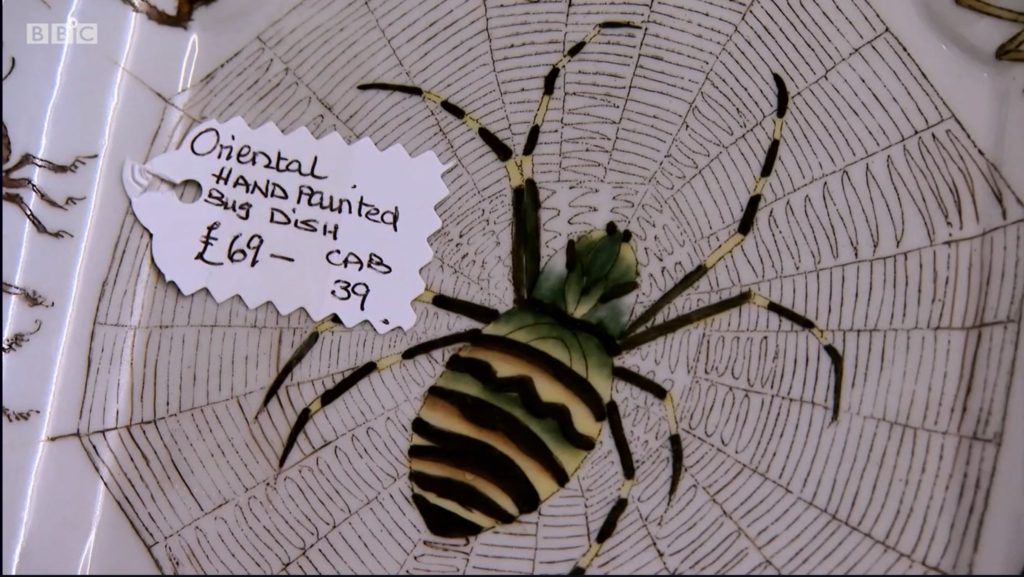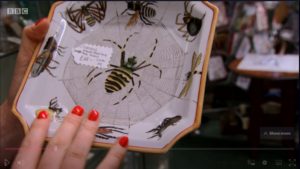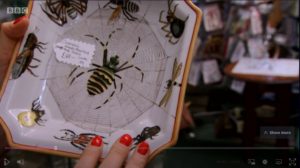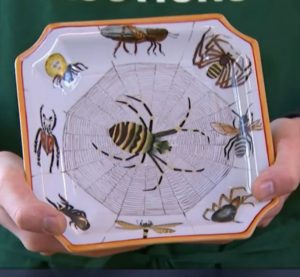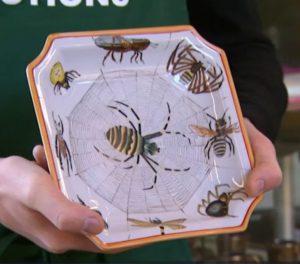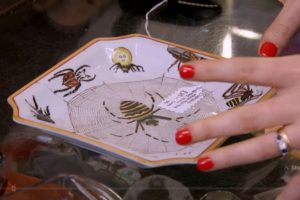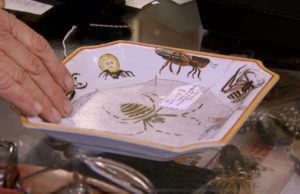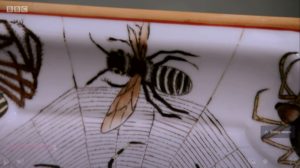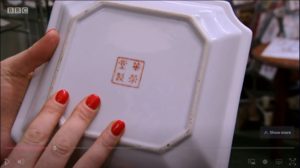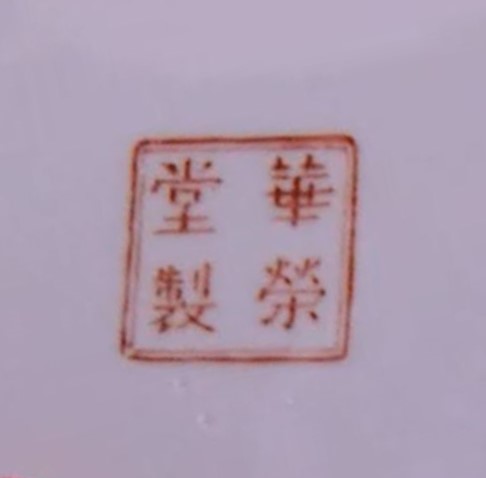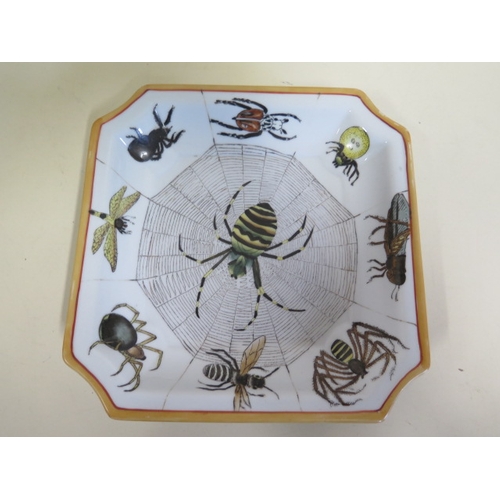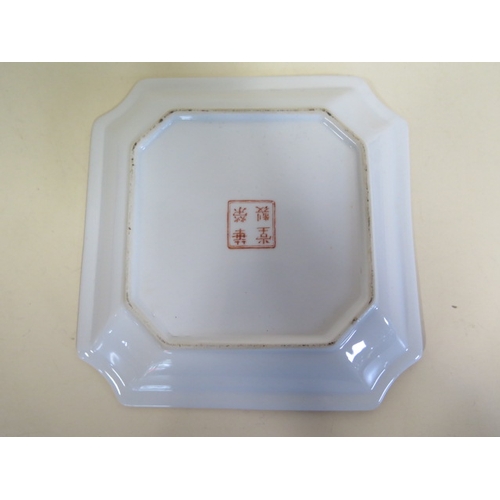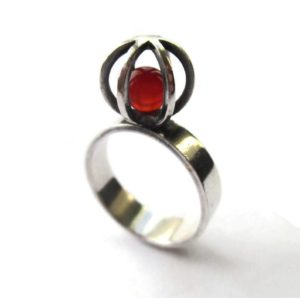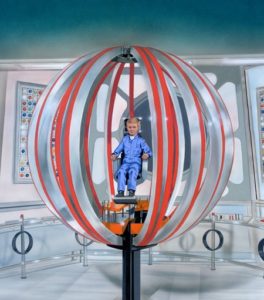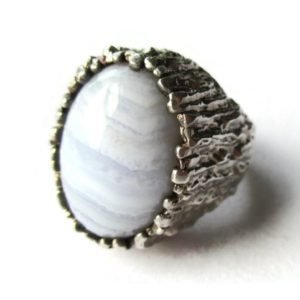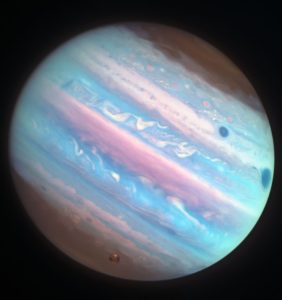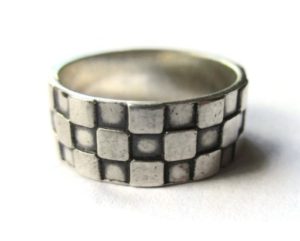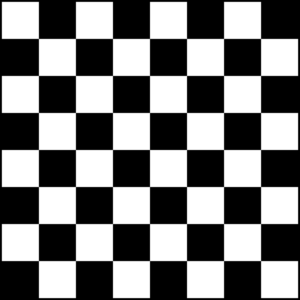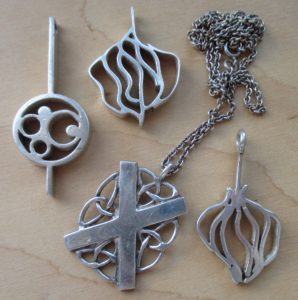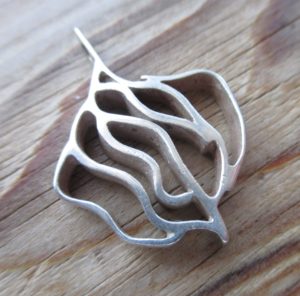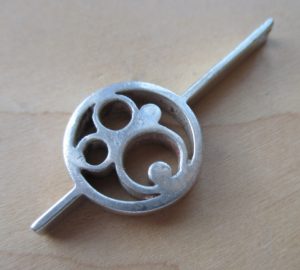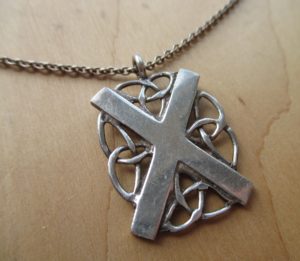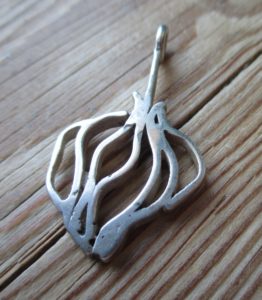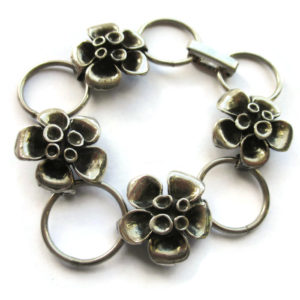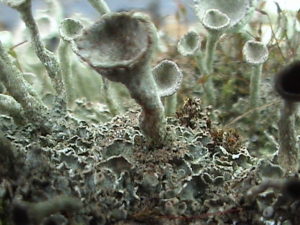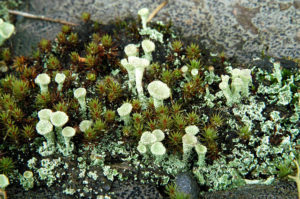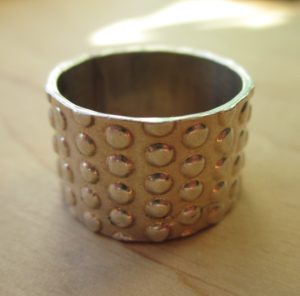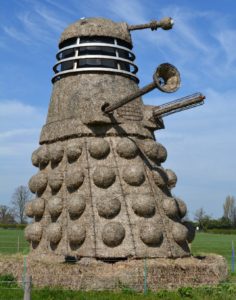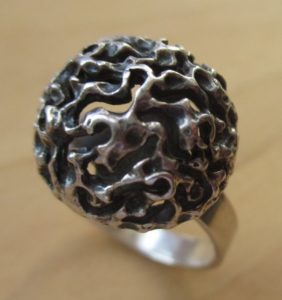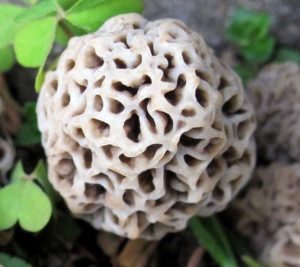I have some tiny brooches for sale in my Etsy shop – all in sterling silver letter in a lovely ornate script, decorated with leaves and curling tendrils, and one with extra enamelled decoration.
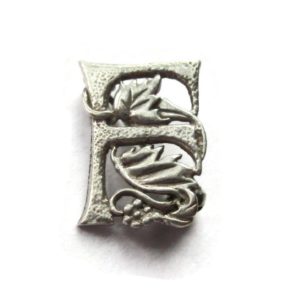
Tiny William Morris letter ‘F’ brooch. For sale in my Etsy shop, Inglenookery: click on photo for details.
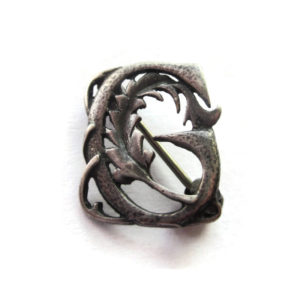
Tiny letter ‘G’ brooch, in a William Morris style, by Ortak/Malcolm Gray. For sale in my Etsy shop, Inglenookery: click on link for details.
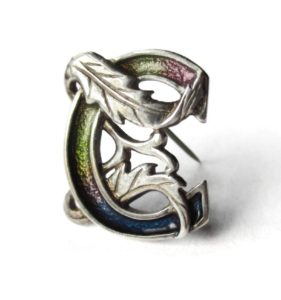
William Morris letter ‘C’ brooch, enamelled, made by Ortak/Malcolm Gray. For sale in my Etsy shop, Inglenookery: click on photo for details.
A few years ago I sold a letter ‘C’ in the plain silver series: an alphabet of brooches in a William Morris design, made by Ortak, the Orkney firm of jewellers founded by Malcolm Gray and based in Kirkwall on Mainland, the largest Orkney island off the north cast of Scotland. I have since sold letters ‘B’, ‘C’, ‘E’, ‘J’, ‘L’, ‘M’, ‘P’ and ‘R’ in this series, and have seen others (‘A’ and ‘H’):
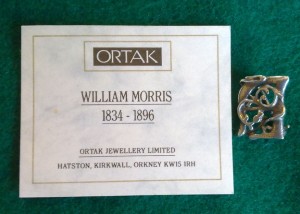
Ortak silver letter ‘A’ brooch. Photo by CAtaway on flickr.
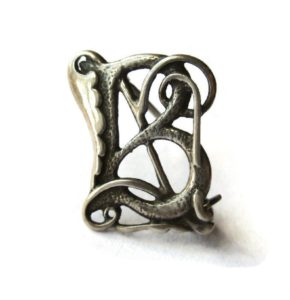
Tiny William Morris letter ‘B’ brooch in sterling silver by Ortak / Malcolm Gray. For sale in my Etsy shop, Inglenookery: click on photo for details. (NOW SOLD).
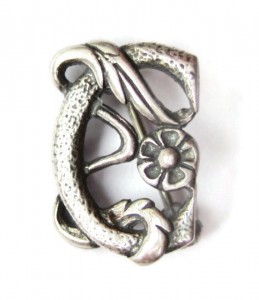
Vintage tiny William Morris design sterling silver brooch forming a letter ‘C’, and made by Ortak in the 1970s. Sold in my Etsy shop, Inglenookery. Click for details. (NOW SOLD).
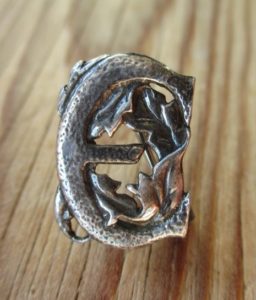
Tiny letter ‘E’ brooch in sterling silver, design by William Morris. For sale in my Etsy shop, Inglenookery: click on photo for details. (NOW SOLD).
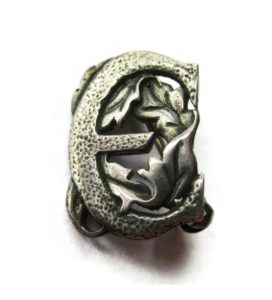
Tiny William Morris letter ‘E’ brooch in sterling silver by Ortak / Malcolm Gray. For sale in my Etsy shop, Inglenookery: click on photo for details. (NOW SOLD).
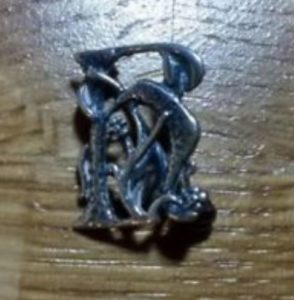
William Morris letter ‘H’ brooch, made by Ortak/Malcolm Gray. Photo by her.dream
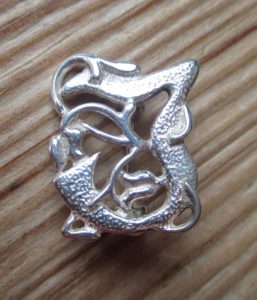
William Morris silver letter ‘J’ brooch (I thought it might be a J or an L, but have since seen the L, so now know this must be a J), made by Ortak/Malcolm Gray. For sale in my Etsy shop, Inglenookery: click on photo for details. (NOW SOLD).
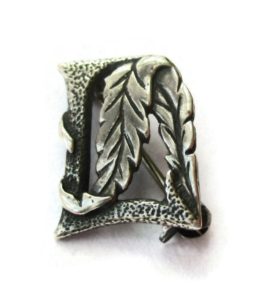
Tiny William Morris style letter L brooch, by Malcomlm Gray/Ortak. For sale in my Etsy shop, Inglenookery: click on photo for details. (NOW SOLD).
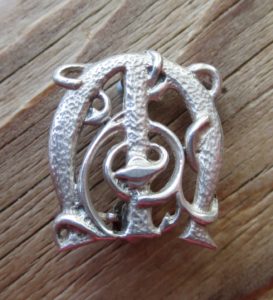
William Morris silver letter ‘M’ brooch, made by Ortak/Malcolm Gray. Sold in my Etsy shop, Inglenookery: click on photo for details. (NOW SOLD).
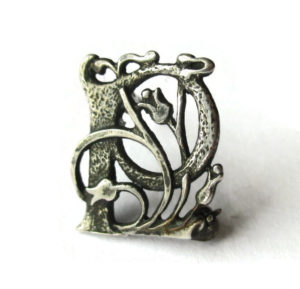
William Morris letter ‘P’ tiny brooch, for sale in my Etsy shop, Inglenookery. Click on photo for details. (NOW SOLD).
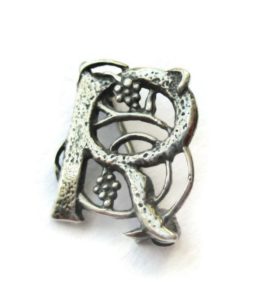
William Morris silver letter ‘R’ brooch, made by Ortak/Malcolm Gray. For sale in my Etsy shop, Inglenookery: click on photo for details. (NOW SOLD).
This series was also available in gold: I have only ever seen one, a letter ‘M’:
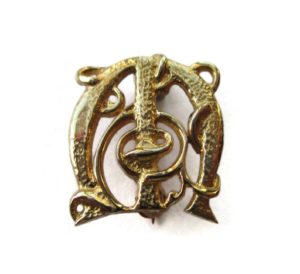
9 carat gold William Morris letter ‘M’ brooch, hallmarked in Edinburgh in 1990. For sale in my Etsy shop, Inglenookery: click on photo for details. (NOW SOLD).
I also had another in the enamelled series:
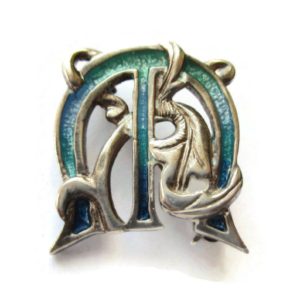
Small enamelled letter M brooch in a William Morris style, by the Scottish firm of Ortak. The brooch is available to buy in my Etsy shop, Inglenookery: click on photo for details. (NOW SOLD).
From my internet truffling, it seems that these letters are most similar to those used by William Morris in his Kelmscott Press edition of Chaucer’s collected works. You can see the letters here (alphabet starts on page 33 of 56).
Morris is one of the founders of the Arts and Crafts movement, and a designer of beautiful textiles, tiles, stained glass, furniture, book design and calligraphy—you name it, he probably designed it.
Morris’s skill at calligraphy is well known, and his illuminated manuscripts and book illustrations are gorgeous and wonderful. Here are some letters designed by Morris that might also have been part of the inspiration for the brooch series above:
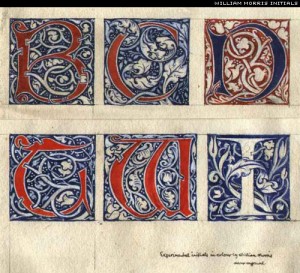
Letters designed by William Morris.
